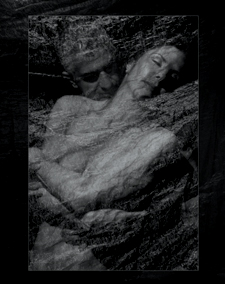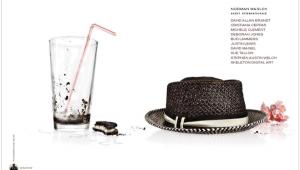Business Trends
Going Pro–Portrait Style; Added Value As A Marketing Tool Page 2
JGW: I really do enjoy showing different cultural and ethnic backgrounds. My all-time favorite clients and images are those with a mixture of ethnic backgrounds. I hope to expand this concept into an art or book project one day.
SB: What has been your experience with portraits for commercial clients?
JGW: I am always working on some commercial work at the same time I do portrait work. I love the variety, and commercial work helps promote my consumer portrait work. I work a lot with real estate agents, coming up with concept looks, instead of the same headshot. Also, I have been fortunate enough to shoot for a few CD covers, a calendar, and a couple of books.
 |
|
|
SB: What was your promotional strategy when you got started?
JGW: My marketing in the beginning of my career was not advertising,
but public relations in the form of showings, competitions, and press releases.
I do think advertising works, but you have to understand your market well and
be able to target market to it.
SB: What is your current marketing plan to bring in the portrait
work you like to do?
JGW: I really work on 100 percent referrals for both commercial
and consumer clients. However, it takes building name recognition, a reputation,
and time to be able to do that. This year I will be trying to use a little public
relations, sending out press releases regarding workshops and awards, to boost
the recognition. I don't do a lot of commercial work at this time, and
the work I do get is from my connections in the portrait consumer world. Keep
in mind, most of my portrait clients are from a higher economic level, which
means most own a business, a chain of businesses, or are a CEO of a corporation.
Because I look for quality work and not a quantity of work, the only thing that
really works for me is referrals. I set my business up as a low volume, high-end
photographer so I don't need a lot of clients to keep my business going.
SB: What things did you learn when you started out--things
you would not recommend photographers do to
get established?
JGW: I can identify three major areas:
· Doing too many things for free! I volunteered so much of my skills to
friends and charities that it took forever to make any profit. Start off as
a business, not a hobby, and make up business cards. It is a good idea to create
a small post card with a summary of your prices and a couple of images from
the start. Hand those out to family and friends immediately, or better yet,
mail them as an announcement. This way, everyone knows from the "get-go"
you are a business.
· Not charging enough! Study your marketing area, and price yourself just
below the going rate when you start. Then you can quickly increase to match
your competition as soon as you have experience and recognition. Don't
give it away or start so low you lose clients when you increase. It took me
four years to get to a price where I actually made any money! Take a marketing
seminar and get a handle on how to price your work before you start.
· Buying too much stuff! Do not go out and buy everything being sold at
conventions and workshops. You really need to first invest in one good camera,
computer, and your education. You do not need major studio lights, props, and
tons of gadgets. You do need a very strong foundation of technical skills and
an excellent understanding of light. Your first priority should be education.
SB: Finally, what recommendations would you make to a photographer
looking to make a strong move into portrait photography--what things did
you feel put you on the right track?
JGW: I would recommend lots of education and entering print
competitions. Those two things pushed me the farthest and fast. I spend a lot
of time reading and in the beginning a lot of time at workshops. Print competition
taught me what I was doing wrong, and allowed me to correct it quickly. Listen
to what the judges say and learn. The only problem I have with print competitions
is the expense and that photographers need to realize that one judge's
opinion is not the answer. Enter many different competitions with the same image
and get the feedback you need.
- Log in or register to post comments
















































